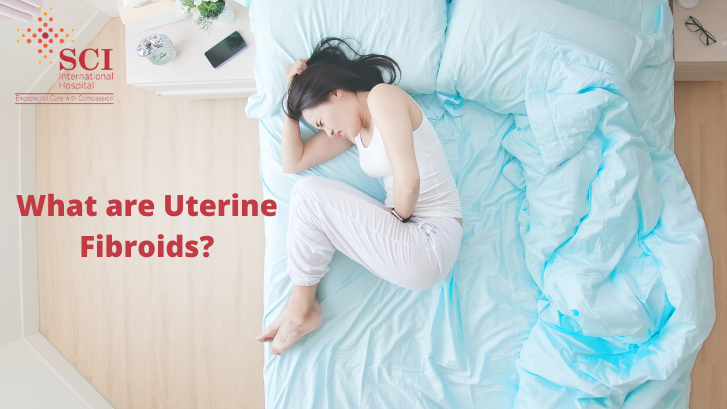
What are Uterine Fibroids?
Uterine fibroids, otherwise called leiomyomas or essentially fibroids, are noncancerous developments that occur in the uterus. These harmless cancers are very common among ladies of conceptive age, with certain examinations estimating that up to 70% of ladies might foster fibroids eventually in their lives. While fibroids are typically harmless and often go unnoticed, they can cause various symptoms and complications that may require medical intervention.
Are Fibroids Common?
Yes, fibroids are quite common among women. Truth be told, they are perhaps the most often analyzed conditions influencing the female regenerative framework. It is estimated that up to 70% of women might develop fibroids eventually in their lives. While they can happen at whatever stage in life, fibroids are more common in ladies of regenerative age, regularly between their 30s and 40s.
The prevalence of fibroids can vary among different ethnic groups, with studies showing that African-American women have a higher risk of developing fibroids compared to women of other ethnic backgrounds. Additionally, family history can also play a role, as women with a family history of fibroids are more likely to develop them themselves.
Types of Uterine Fibroids
Subserosal Fibroids:
Subserosal fibroids develop on the outer surface of the uterus, often causing a noticeable bulge. These fibroids may not cause significant symptoms unless they become large or press on adjacent organs, such as the bladder or rectum.
Intramural Fibroids:
Intramural fibroids are the most common type, developing within the muscular wall of the uterus. These fibroids can cause symptoms such as heavy menstrual bleeding, pelvic pain, and pressure.
Submucosal Fibroids:
Submucosal fibroids grow into the uterine cavity, and they are more likely to cause symptoms such as heavy or prolonged menstrual bleeding and fertility problems. They may likewise prompt entanglements during pregnancy, like a higher risk of premature delivery or preterm labor.
Causes of Uterine Fibroids
The exact cause of uterine fibroids is still unclear, but several factors may contribute to their development. Hormonal imbalances, particularly high levels of estrogen and progesterone, are believed to play a role in fibroid growth. Genetic factors, family history, and certain lifestyle factors, such as obesity and a diet high in red meat and low in fruits and vegetables, may also increase the risk of developing fibroids.
Symptoms of Uterine Fibroids
The presence of uterine fibroids doesn't always cause noticeable symptoms. However, when symptoms do occur, they can vary in severity depending on the size, number, and location of the fibroids. Some common symptoms include:
Heavy Menstrual Bleeding:
Fibroids can cause excessive menstrual bleeding, leading to prolonged periods or the need for frequent changes in sanitary products. Women with fibroids may also pass blood clots during their menstrual cycle.
Pelvic Pain and Pressure:
Fibroids can cause persistent pelvic pain or discomfort, which may be accompanied by a feeling of pressure in the lower abdomen. Some women may experience pain during sexual intercourse.
Urinary Problems:
Large fibroids can put pressure on the bladder, leading to frequent urination, urgency, or difficulty emptying the bladder completely. In some cases, fibroids can even cause urinary tract infections.
Infertility and Pregnancy Complications:
Depending on their size and location, fibroids can interfere with fertility by blocking the fallopian tubes or disrupting the implantation of a fertilized egg. Fibroids may also increase the risk of complications during pregnancy, such as placental abruption, preterm labor, or a breech presentation.
Diagnosis of Uterine Fibroids
If fibroids are suspected, a healthcare provider may perform various tests and examinations to confirm the diagnosis. These may include:
Physical Examination
During a physical examination, the healthcare provider may feel for any abnormalities in the uterus by palpating the lower abdomen. They may also perform a pelvic exam to assess the size and position of the uterus.
Imaging Tests
Imaging tests, such as ultrasound, magnetic resonance imaging (MRI), or hysterosonography, can provide detailed images of the uterus and help determine the size, number, and location of fibroids.
Biopsy
In some cases, a biopsy may be performed to rule out other conditions and confirm the diagnosis. A small tissue sample is taken from the uterus and examined under a microscope.
Treatment Options for Uterine Fibroids
The choice of uterine fibroids treatment depends on various factors, including the severity of symptoms, the size and location of fibroids, a woman's age, and her desire for future fertility. Treatment options include:
Medications:
Certain medications, such as nonsteroidal anti-inflammatory drugs (NSAIDs), hormonal contraceptives, and gonadotropin-releasing hormone (GnRH) agonists, can help manage symptoms by reducing pain and controlling heavy bleeding. However, these medications do not eliminate fibroids.
Non-invasive Procedures:
Non-invasive procedures, such as uterine artery embolization (UAE) and focused ultrasound surgery (FUS), use different techniques to shrink or destroy fibroids without the need for surgery. These procedures are less invasive than traditional surgical options and may be suitable for women who want to preserve their uterus.
Surgical Options:
Surgical interventions, such as myomectomy and hysterectomy, may be recommended for women with severe symptoms or those who have completed their family planning. Myomectomy involves removing the fibroids while preserving the uterus, whereas hysterectomy involves the complete removal of the uterus.
Lifestyle Changes to Manage Uterine Fibroids
In addition to medical interventions, certain lifestyle changes may help manage the symptoms of uterine fibroids. These include:
- Eating a balanced diet rich in fruits, vegetables, and whole grains.
- Maintaining a healthy weight.
- Engaging in regular physical activity.
- Managing stress levels through techniques such as meditation, yoga, or deep breathing exercises.
- While these lifestyle changes cannot eliminate fibroids, they may help alleviate symptoms and improve overall well-being.
When to Seek Medical Help
It is important to seek medical help if you experience any symptoms that may be related to uterine fibroids. Additionally, if you have been diagnosed with fibroids and your symptoms worsen or new symptoms develop, it is advisable to consult with your healthcare provider.
Complications Associated with Uterine Fibroids
Although uterine fibroids are generally noncancerous and benign, they can sometimes lead to complications. These may include:
- Anemia due to heavy menstrual bleeding.
- Chronic pelvic pain.
- Infertility or pregnancy complications.
- Urinary or bowel problems.
- Degeneration of fibroids causes severe pain and possible infection.
- Prevention of Uterine Fibroids
- Unfortunately, there is no guaranteed way to prevent the development of uterine fibroids. However, certain lifestyle choices may help reduce the risk or minimize
Living with Uterine Fibroids
Living with uterine fibroids can be challenging, especially when dealing with symptoms that affect daily life. It is important to prioritize self-care, seek support from healthcare professionals, and explore various treatment options to manage symptoms effectively.
Alternative Therapies for Uterine Fibroids
Some women may consider alternative therapies to complement medical treatments or alleviate symptoms. These may include herbal remedies, acupuncture, or dietary supplements. However, it is crucial to consult with a healthcare provider before trying any alternative therapies, as their efficacy and safety can vary.
Research and Future Developments
Ongoing research aims to improve our understanding of uterine fibroids and develop more effective treatment options. Scientists are investigating potential targeted therapies, hormone-modulating drugs, and non-invasive procedures to provide women with better choices and outcomes.
Also Read: What is Hysterectomy? Purpose And Procedure
Conclusion
Uterine fibroids are common noncancerous growths that develop in the uterus. While often asymptomatic, they can cause a range of symptoms and complications that impact a woman's quality of life. Seeking medical attention, understanding the available treatment options, and adopting a healthy lifestyle can help manage symptoms and promote overall well-being for women with uterine fibroids.

